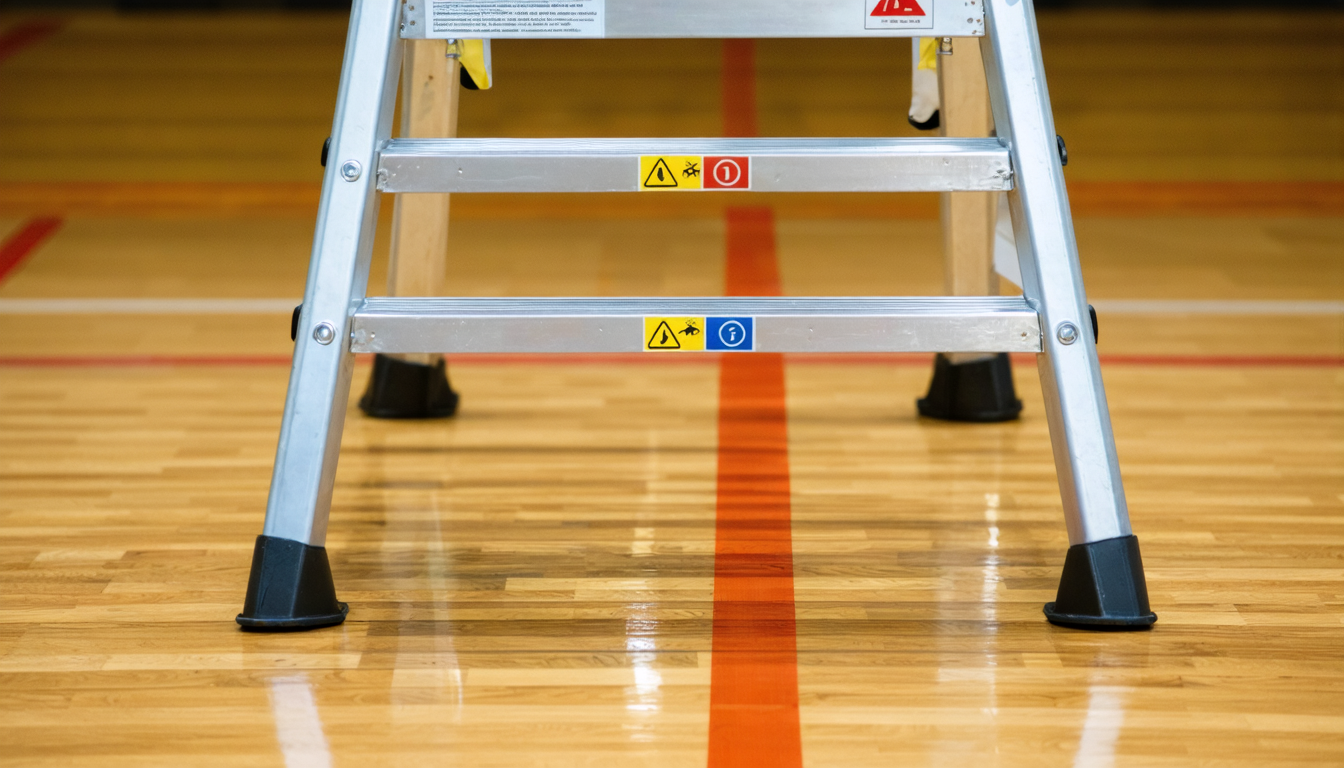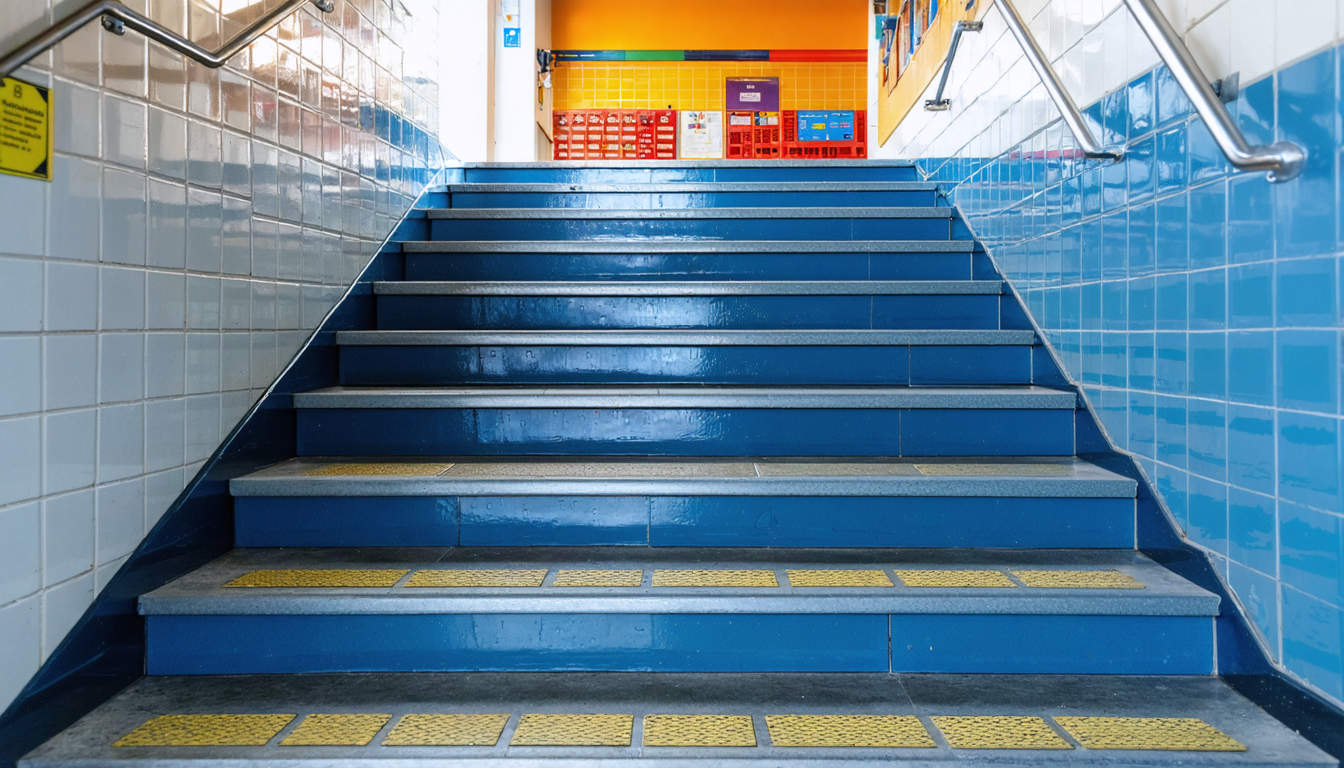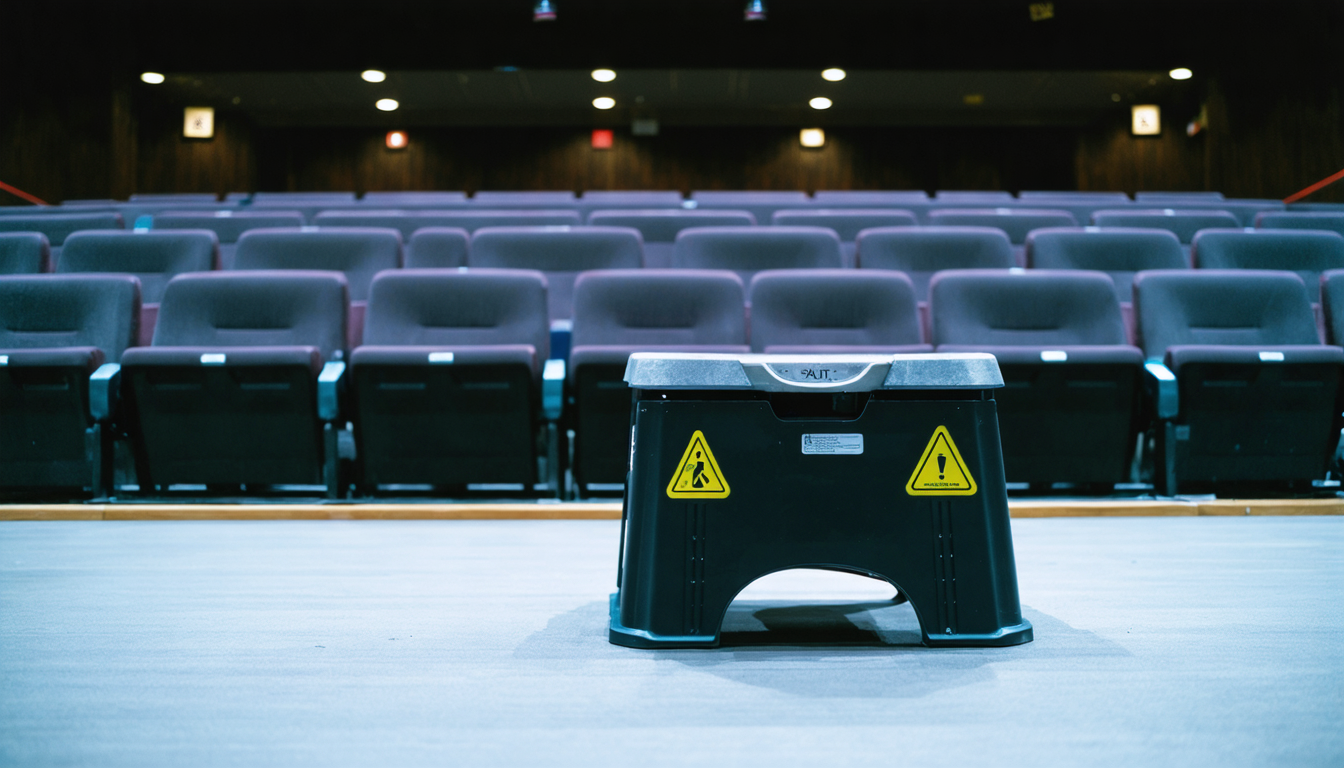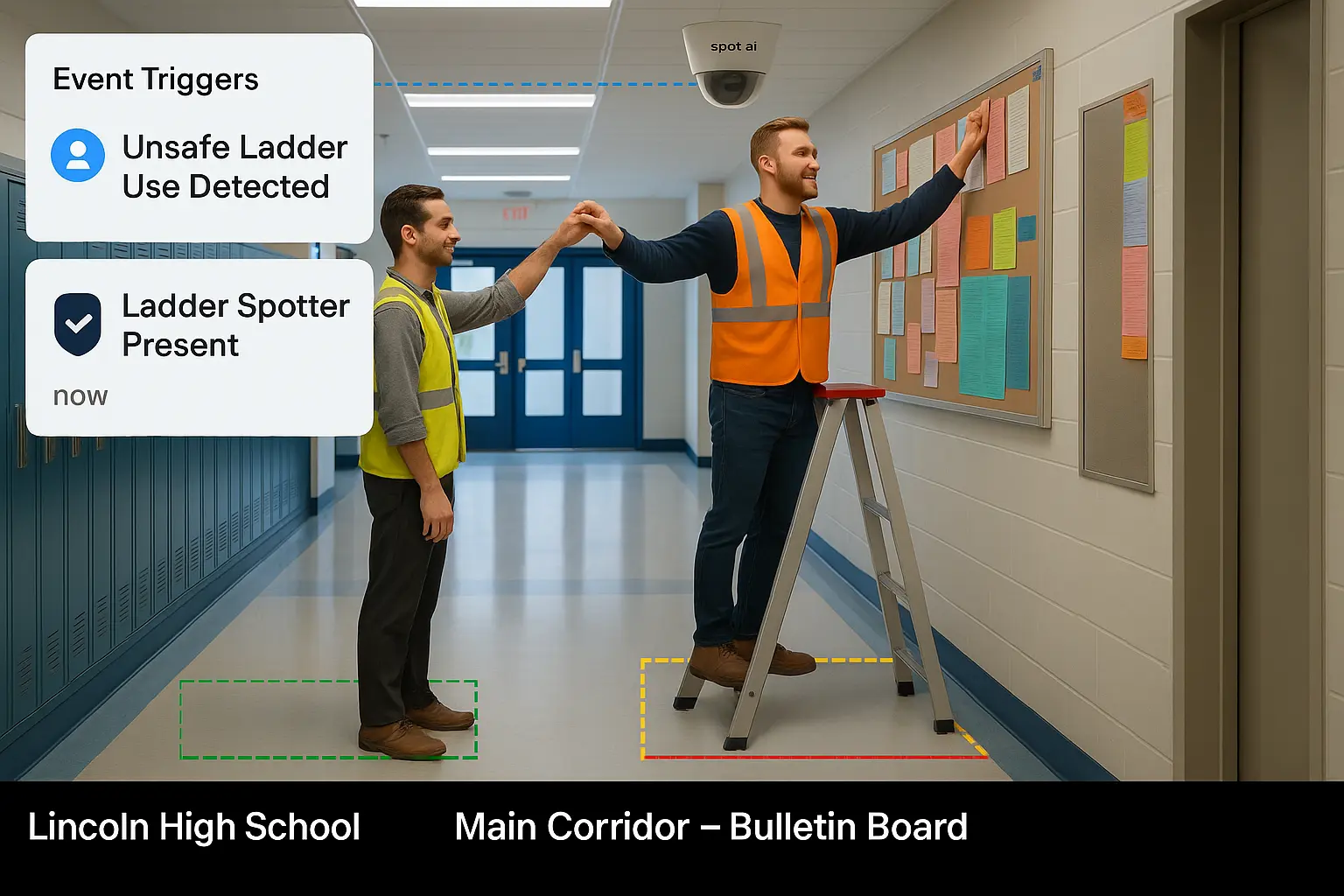Each year, falls from heights rank among the most serious causes of injuries in educational settings. The good news: most of these incidents are preventable. A comprehensive safety approach—combining robust protocols, focused training, and modern technology—can turn reactive investigations into proactive prevention. In this article, we’ll break down the root causes of falls from heights in education, highlight the true costs, and lay out a practical framework for moving from reactive to proactive with the help of AI-powered video intelligence.
Why Falls from Heights Are a Major Liability in Education
Falls from heights are not just a facilities issue—they’re a systemic risk that impacts every part of an educational institution's operations. According to OSHA data, 38.6% of falls in education involve ladders, followed by stairs (19.3%), scaffolds (8.8%), roofs (8.8%), and a mix of other elevated surfaces (24.6%) (Source: OSHA, 2025). Even relatively short falls—from as little as three to six feet—can result in fractures, concussions, or other severe injuries.
The Top 5 Causes of Falls from Heights in Education and How to Prevent Them
Understanding the root causes is key to prevention. Here are the five leading scenarios for falls from heights in educational settings—and how to address them, step by step.
1. Improper Use or Condition of Ladders

The Hazard:
A teacher climbs a step ladder to hang a banner in the gym. The ladder’s feet are worn, and it wobbles on the polished floor. As the teacher reaches sideways for the edge of the banner, the ladder shifts, and a fall occurs. OSHA data shows that ladders are involved in 38.6% of falls from heights in the education sector (Source: OSHA, 2025).
Traditional Prevention:
Annual ladder inspections and tagging out damaged ladders.
Mandatory ladder safety training for staff.
Policies prohibiting standing on the top step or overreaching.
How AI Amplifies Prevention:
AI-powered video analytics can detect when ladders are being used in unauthorized areas or by untrained personnel. Real-time alerts allow facilities teams to intervene before an incident occurs. Reviewing flagged video can also highlight recurring unsafe ladder practices and support targeted retraining.
2. Unsafe Practices on Stairs, Platforms, or Steps

The Hazard:
A custodian, carrying cleaning supplies, descends a dimly lit staircase after hours. He misses a step and falls, injuring his ankle and hip. Stairs and steps are responsible for nearly one in five falls from heights in schools (Source: OSHA, 2025).
Traditional Prevention:
Scheduled lighting checks and stair maintenance.
Installation of anti-slip treads and clear step markings.
Policies to keep stairways clear of obstructions.
How AI Amplifies Prevention:
Video intelligence can instantly flag “possible fall” events on stairs, alerting supervisors within seconds. Continuous monitoring also identifies patterns—like falls occurring in specific stairwells or at certain times—so resources can be directed where they matter most.
3. Falls from Roofs, Scaffolds, or Elevated Surfaces
The Hazard:
A maintenance worker is assigned to clean gutters on a school roof. There are no guardrails, and no fall arrest harness is used. While kneeling to scoop debris, the worker becomes dizzy, stands up, and loses balance, resulting in a fall to the ground below. These scenarios are common in maintenance and facilities work.
Traditional Prevention:
Permit-to-work system for any job involving roof or scaffold access.
Mandatory use of fall protection (harnesses, guardrails).
Routine inspection of scaffolds, lifts, and roof access points.
How AI Amplifies Prevention:
AI analytics can detect when a person enters restricted areas like rooftops or scaffolds. If someone is working at height without PPE, the system can flag “missing personal protective equipment” events. This ensures both compliance and accountability.
4. Makeshift Platforms and Improvised Solutions

The Hazard:
During a school play, a staff member stands on a folding table to adjust lighting rather than fetching a ladder. The table shifts, leading to a fall and a fractured wrist. OSHA data highlights that 24.6% of falls involve stools, counters, or other makeshift platforms (Source: OSHA, 2025).
Traditional Prevention:
Strict policies against makeshift platforms.
Easy access to proper ladders and step stools.
Staff reminders and signage about safe work practices.
How AI Amplifies Prevention:
AI video can monitor for “possible fall” events in high-risk areas such as auditoriums and stages. It can also flag loitering or unauthorized activities in these spaces, enabling rapid intervention before unsafe improvisation leads to an injury.
5. Inadequate Training
The Hazard:
A new facilities worker is tasked with changing ceiling tiles. Unaware of the latest fall protection procedures, she uses an old ladder and skips briefing a spotter. In one study, only 40% of schools had a designated “competent person” for fall protection, and most staff received less than half the OSHA-required training hours (Source: Plant Engineering, 2025).
Traditional Prevention:
Regular, documented safety training for all staff.
Appointing and training “competent persons” as per OSHA 29 CFR 1910.28.
Visible posters and reminders in staff areas.
How AI Amplifies Prevention:
Video analytics can be configured to detect “running” or other unsafe behaviors that often precede falls. Reviewing incident footage helps safety teams identify gaps in training and adapt programs based on real-world risk patterns, not just theory.
Integrating a Modern AI Camera System: From NVR to AI Insights in Education
Upgrading to AI-powered video safety doesn’t mean ripping and replacing your existing infrastructure. Modern cloud-based systems are designed to bridge your current POE cameras—no matter their age—into a single, unified, cloud-native dashboard.
Here’s how the leap from traditional NVRs to AI-driven insights changes the game:
Feature | Traditional NVR | Modern AI Camera Platform |
|---|---|---|
Camera Compatibility | Often requires new models | Works with existing POE/legacy cameras |
Storage | On-premise, limited | Cloud-native, scalable, secure |
Maintenance | Frequent site visits | Minimal, remote, automatic updates |
User Access | Limited seats | Unlimited users, unified dashboard |
Video Review | Manual, slow | AI-powered search, real-time event detection |
Actionable Insights | Passive footage | Real-time alerts: falls, no-go zones, missing PPE |
Unlike standard security systems, the AI layer automatically surfaces critical safety events—such as possible falls, unauthorized ladder use, or missing PPE—reducing investigation times and empowering teams to act faster. Unlimited user seats mean that safety isn’t siloed; facilities, IT, and administration can all have the visibility and accountability they need.
Practical integration tips:
Map out your high-risk zones (stairs, roofs, gyms, maintenance areas).
Check that your current cameras cover these zones—modern AI overlays work with most existing feeds.
Prioritize platforms that offer real-time insights, not just footage storage.
Align technology with your broader safety goals—incident reporting, staff training, and regular audits.
A cloud-based video system fits right into your existing safety program, amplifying what’s already working and closing gaps that manual methods miss.
Transform School Safety—Book a Consultation for Your Team
Falls from heights are preventable. By combining proven safety protocols with AI-powered video analytics, your school can reduce risk, protect staff and students, and stay ahead of compliance challenges. Technology is just one part of the solution—your people, culture, and commitment to proactive safety make the real difference.
Ready to see how video intelligence can support your safety goals? Book a safety consultation with Spot AI’s experts for tailored, actionable guidance on building a safer campus. Book a safety consultation.
Frequently asked questions
What are the main causes of falls from heights in schools?
The leading causes are improper ladder use, unsafe practices on stairs and platforms, working on roofs or scaffolds without protection, use of makeshift platforms, and inadequate training or complacency (Source: OSHA, 2025).
How can education organizations implement safety technology without disrupting learning?
Modern AI video platforms connect to your existing cameras and overlay analytics with no disruption to daily operations. They automate hazard detection and reporting, supporting your staff and freeing them to focus on teaching and student support.
What compliance standards apply to falls from heights in education?
OSHA 29 CFR 1910.28 requires guardrails, safety nets, or personal fall arrest systems for work at heights of four feet or more. Regular training, proper equipment, and documented safety procedures are also essential (Source: OSHA, 2025).
What steps should schools take before adopting AI camera technology?
Start with a risk assessment—identify high-risk locations and current camera coverage. Involve your facilities, IT, and safety teams early. Pilot the system in a targeted area, review results, then expand based on data-driven improvements.
How does AI video analytics help with incident investigations?
AI-powered systems automatically flag incidents—like possible falls or no-go zone violations—making it easy to review exactly what happened, understand the root cause, and support faster, more accurate investigations for compliance and insurance.
How can safety technology help reduce stress for safety managers?
AI-driven analytics automate hazard detection, freeing safety managers from constant manual monitoring. This lets them focus on proactive planning and team support, rather than reacting to every single incident.
About the author
Joshua Foster
IT Systems Engineer, Spot AI
Joshua Foster is an IT Systems Engineer at Spot AI, where he focuses on designing and securing scalable enterprise networks, managing cloud-integrated infrastructure, and automating system workflows to enhance operational efficiency. He is passionate about cross-functional collaboration and takes pride in delivering robust technical solutions that empower both the Spot AI team and its customers.

























.png)
.png)
.png)